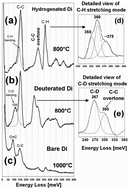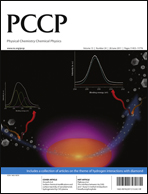Hydrogen bonding configuration and thermal stability of ambient exposed and in situ hydrogenated polycrystalline diamond surfaces studied by high resolution electron energy loss spectroscopy
Abstract
In this work we report on an investigation of hydrogen bonding and thermal stability on the surface of poly-crystalline diamond by high resolution

- This article is part of the themed collection: Hydrogen Interactions with Diamond

 Please wait while we load your content...
Please wait while we load your content...